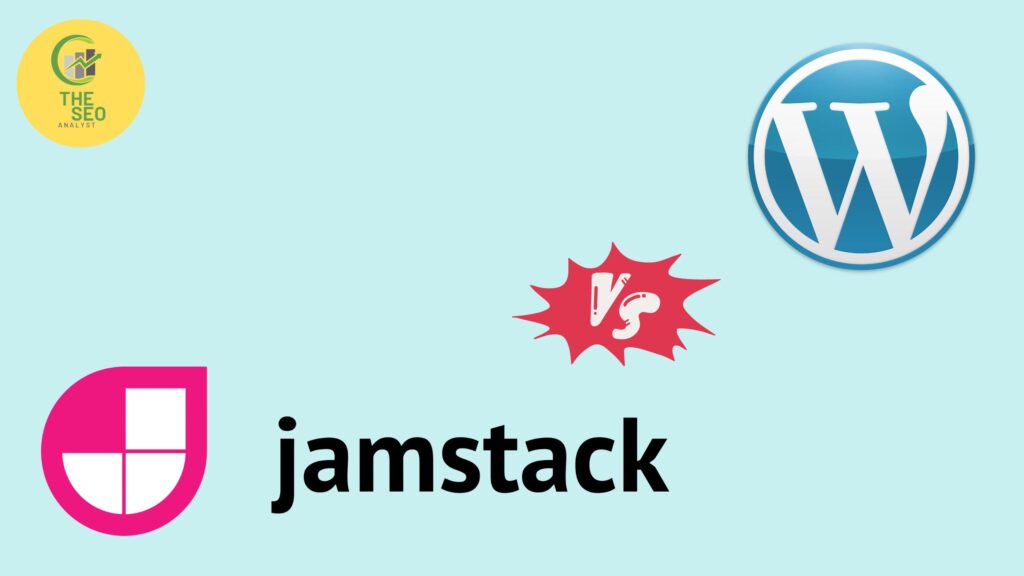WordPress continues to be the leading Content Management System, currently powering around 35% of the internet. When WordPress was launched in 2004, it began as a dedicated blogging platform.
Nowadays, it’s a multi-purpose website creator. Moreover, WordPress offers an extensive ecosystem of themes and plugins. It has become the go-to option for numerous website owners due to its affordability and user-friendly nature, making it accessible even for those without coding knowledge.
However, web technologies have undergone significant changes over the years. In turn, WordPress’s techs are becoming less trendy than it once was. Front-end JavaScript frameworks, such as React, are paving the way for a new era in website development. Consequently, developers are actively exploring alternatives to WordPress and its PHP-based templates.
Understanding JAMstack
What is JAMstack?
The JAMstack (JavaScript, APIs, and Markup) web tech stack is continuously gaining popularity. It leverages JavaScript to power the front end, APIs to connect the front end with various services and utilizes static files for web pages.
The key distinction of JAMstack is its independence from relying on a traditional server architectureUnlike traditional websites rely on database connections and server requests, JAMstack sites are pre-built and serverless. In the JAMstack architecture, a Content Distribution Network (CDN) generates and delivers the static files. Third-party services provide server-like functionalities through APIs.
Additionally, the emergence of static web generators makes creating JAMstack websites more accessible and streamlined. Developers can quickly create basic websites using Static Site Generators (SSGs) such as Gatsby or Hugo.
Benefits of JAMstack
Apart from being the latest trend in web development, the popularity of JAMstack is driven by several compelling reasons.
Firstly, it addresses numerous pain points for both website owners and developers. It offers improved speed, cost-effectiveness, scalability, and enhanced security.
WordPress: The Champion of Content Management
WordPress is a well-established content management system with a large user base. It offers many features and benefits, making it a popular choice for many website owners.
However, it’s essential to acknowledge that JAMstack has limitations and drawbacks that should be considered.
JAMstack and WordPress: A Detailed Comparison
Content Management Systems in JAMstack
JAMstack offers multiple options for content management. One popular approach is using a headless CMS. A headless CMS allows users to create and manage content from an admin panel while decoupling it from the front end. This means that content can be delivered via APIs to a static site generator or a front-end framework.
This separation of concerns gives developers more control over the presentation layer while ensuring an efficient and scalable content management process.
WordPress: More Than Just a Blogging Platform
While WordPress began as a blogging platform, it has evolved into a versatile content management system. It now powers various websites, including e-commerce stores, portfolios, corporate websites, etc.
Its extensive plugin ecosystem enables users to add advanced functionality and customize their sites without extensive coding knowledge.
The Power of Themes and Plugins
One of the critical strengths of WordPress lies in its wide range of themes and plugins. Pieces provide pre-designed templates and layouts, allowing users to create visually appealing websites quickly.
On the other hand, plugins extend the functionality of WordPress, offering features such as contact forms, SEO optimization, social media integration, and much more. The vast array of themes and plugins makes it easy to tailor a WordPress site to specific needs.
JAMstack’s Flexibility and Scalability
JAMstack’s architecture offers flexibility and scalability advantages. The separation of front-end and back-end allows developers to leverage the latest JavaScript frameworks and libraries, such as React or Vue.js, for building dynamic and interactive user interfaces.
With APIs, JAMstack sites can connect to external services, enabling integration with various third-party tools and services.
Search Engine Optimization (SEO) Considerations
JAMstack and WordPress can be optimized for search engines, but they approach it differently. WordPress has built-in SEO plugins like Yoast SEO that provide extensive features for optimizing content, meta tags, sitemaps, and more. JAMstack sites, on the other hand, excel in performance, loading speed, and static file delivery, which are crucial ranking factors for search engines.
Additionally, JAMstack sites can benefit from CDN caching and pre-rendering techniques, further enhancing their SEO capabilities.
Development and Deployment Workflow
WordPress development often involves setting up a local development environment, managing a database, and deploying changes to a live server. JAMstack, however, offers a more streamlined development workflow.
With the use of Git repositories and static site generators, developers can easily collaborate, track changes, and deploy updates more efficiently. This simplified workflow contributes to faster development cycles and smoother project management.
The Future of Web Development
While JAMstack is gaining popularity and offers compelling advantages, WordPress remains dominant in content management. Its large user base, extensive community support, and ease of use make it a reliable choice for many website projects.
As web technologies evolve, the decision between JAMstack and WordPress will likely depend on each project’s specific needs and goals. JAMstack’s focus on performance, scalability, and modern web development practices appeals to developers prioritizing speed and efficiency. With advancements in static site generators and headless CMS platforms, JAMstack is becoming more accessible and capable of handling complex projects.
On the other hand, WordPress’s established ecosystem, vast plugin library, and user-friendly interface make it an attractive option for non-technical users and businesses looking for a familiar and flexible content management system.
WordPress’s continuous development and community-driven improvements ensure it remains relevant and adaptable to changing web trends.
Conclusion
In conclusion, both JAMstack and WordPress have strengths and weaknesses, making them suitable for different scenarios.
JAMstack offers speed, scalability, security, and flexibility, making it an excellent choice for developers prioritizing performance and modern web technologies.
On the other hand, WordPress remains a popular choice for non-technical users and projects that require extensive customization options, thanks to its user-friendly interface, vast plugin ecosystem, and community support.
Ultimately, the decision between JAMstack and WordPress depends on the team’s technical expertise, project requirements, budget, and specific goals. It’s essential to assess the needs of your project and consider the trade-offs before making a decision.
While JAMstack is an exciting part of the JavaScript ecosystem, WordPress remains a reliable and widely adopted content management system. With proper optimization and adherence to best practices, WordPress can deliver a fast, secure, and user-friendly website.
Frequently Asked Questions
JAMstack sites can handle dynamic content by integrating with third-party services and APIs. The content can be fetched and rendered on the client side using JavaScript.
WordPress sites require frequent updates to address security vulnerabilities. Failure to update the core WordPress software, themes, and plugins can leave the area vulnerable to attacks. However, with proper security measures and updates, WordPress can be secure.
JAMstack sites are well-suited for scaling and handling traffic spikes. By leveraging CDNs and pre-built static files, JAMstack sites can efficiently distribute content and handle increased user demand without impacting performance.
WordPress remains relevant and widely used, especially for non-technical users or projects requiring extensive customization. It offers a user-friendly interface, a vast ecosystem of themes and plugins, and a large support community.
Yes, it is possible to migrate an existing WordPress site to JAMstack. However, the process may involve redesigning the site and adapting the content management system to work with a headless CMS or static site generator. Proper planning and considering the site’s requirements are
essential for a successful migration.

A prominent SEO and Business Analyst with 5+ years of experience helping businesses achieve growth



